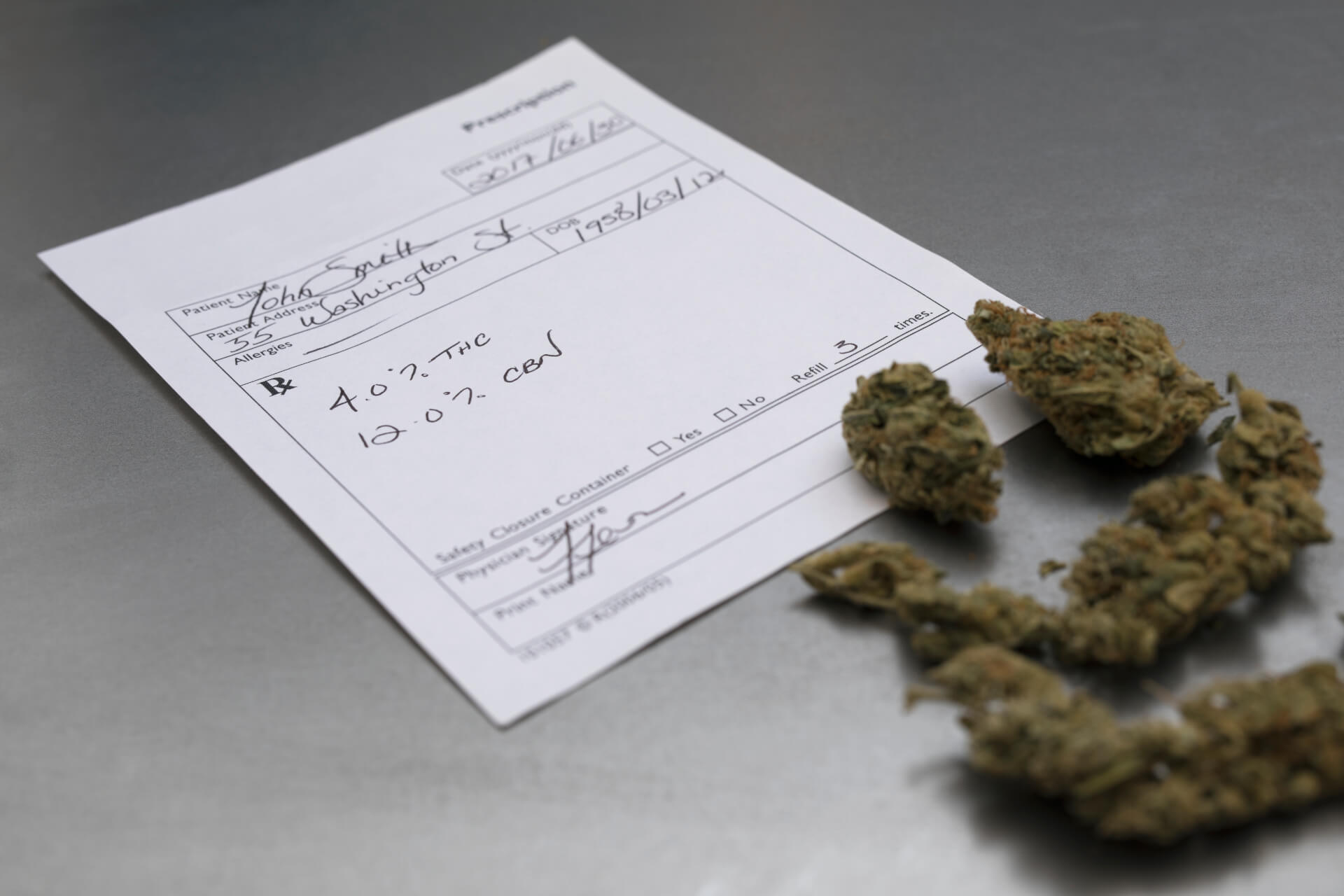Medical Cannabis in the Czech Republic: A Comprehensive Guide
Medical cannabis has become an increasingly important part of healthcare in many countries around the world, including the Czech Republic. As legislation evolves and public awareness grows, patients and healthcare providers alike are navigating the complexities surrounding medical cannabis use. This comprehensive article explores the history, legal framework, qualifying conditions, prescription processes, products, costs, patient experiences, and future outlook of medical cannabis in the Czech Republic. It also offers practical advice for patients considering or currently using medical cannabis as part of their treatment.
Table of Contents
1. Introduction 2. History of Medical Cannabis in the Czech Republic 3. Qualifying Conditions for Medical Cannabis 4. The Prescription Process 5. Finding Doctors and Clinics 6. Available Products and Strains 7. Pharmacies and Dispensing 8. Costs and Insurance Coverage 9. Methods of Administration 10. Dosing Guidelines 11. Patient Experiences and Testimonials 12. Legal Rights and Protection for Patients 13. Importation Rules and Regulations 14. Future Outlook and Developments 15. Practical Advice for Patients 16. Conclusion
1. Introduction
Medical cannabis refers to the use of the Cannabis plant or its extracts for medical purposes to alleviate symptoms of various conditions. In the Czech Republic, medical cannabis was legalized in 2013, making it one of the first Eastern European countries to permit its therapeutic use. Since then, the program has evolved significantly, offering new opportunities and challenges for patients and healthcare providers.
2. History of Medical Cannabis in the Czech Republic
Early Legalization
The Czech Republic legalized medical cannabis in 2013 under Act No. 167/1998 Coll. on addictive substances, which was amended to allow doctors to prescribe cannabis-based medicines. The legalization was driven by growing evidence of cannabis’s therapeutic potential and increasing public interest.
Initial Challenges
Despite legalization, the initial rollout was slow and hampered by regulatory hurdles. Medical cannabis was strictly regulated, and the supply limited. Few doctors were willing to prescribe it, partly due to lack of education on its use and concerns about legal repercussions.
Recent Developments
By the late 2010s and early 2020s, medical cannabis became more accessible. The State Institute for Drug Control (SÚKL) began approving more products, and pharmacies started dispensing cannabis-based medicines. The Czech government also facilitated domestic cultivation and import of medical cannabis to meet demand.
3. Qualifying Conditions for Medical Cannabis
Medical cannabis is prescribed for a range of qualifying conditions in the Czech Republic. The Ministry of Health provides guidelines, although doctors retain discretion based on clinical judgment.
Common Qualifying Conditions:
- Chronic Pain: Especially neuropathic pain unresponsive to conventional therapies.
- Multiple Sclerosis (MS): To reduce spasticity and pain.
- Cancer: For pain relief, nausea, and appetite stimulation during chemotherapy.
- Epilepsy: Particularly treatment-resistant forms.
- HIV/AIDS: To alleviate wasting syndrome and pain.
- Post-Traumatic Stress Disorder (PTSD)
- Glaucoma
- Crohn’s Disease and other inflammatory bowel diseases
- Anorexia and cachexia related to chronic illness
- Tourette Syndrome
- Some doctors may also consider cannabis for other conditions such as Parkinson’s disease, anxiety disorders, or insomnia.
4. The Prescription Process
Step 1: Consultation with a Doctor
Patients wishing to obtain medical cannabis must first consult a licensed physician. Specialists such as neurologists, oncologists, or pain management doctors are more familiar with prescribing cannabis.
Step 2: Medical Evaluation
The doctor evaluates the patient’s condition, treatment history, and suitability for medical cannabis. If appropriate, the doctor writes a prescription.
Step 3: Prescription Details
Prescriptions for medical cannabis must specify the form, dosage, and quantity. Czech law requires prescriptions to be written on a special form (similar to narcotics prescriptions) and include patient identification.
Step 4: Pharmacy Dispensing
Patients take the prescription to a registered pharmacy authorized to dispense medical cannabis products.
Step 5: Follow-Up
Regular follow-ups with the prescribing physician are recommended to monitor efficacy, side effects, and adjust dosage.
5. Finding Doctors and Clinics
- Specialist Clinics: Pain clinics, neurology departments, and oncology centers are often the best places to start.
- General Practitioners: Some GPs may prescribe cannabis but often refer to specialists.
- Online Directories: Websites such as the Czech Cannabis Association (Česká asociace pro léčebné konopí) provide lists of doctors experienced in medical cannabis.
- Patient Support Groups: These groups often share recommendations and experiences with doctors.
6. Available Products and Strains
Medical cannabis products available in the Czech Republic include:
Flower (Dried Cannabis)
- Various strains with differing THC and CBD ratios.
- Predominantly imported due to limited domestic production.
Extracts and Oils
- Standardized cannabis oils with known THC/CBD content.
- Suitable for patients who prefer not to smoke.
Capsules and Tablets
- Oil-filled capsules offering precise dosing.
- Less common but available.
Topicals
- Creams and balms infused with cannabinoids, used for localized pain or inflammation.
Approved Products
Pharmacies typically stock products approved by SÚKL, including imported brands such as Bedrocan, Bedica, and Bediol, known for consistent cannabinoid profiles.
7. Pharmacies and Dispensing
Not all pharmacies in the Czech Republic dispense medical cannabis. Patients should:
- Verify Pharmacy Authorization: Only pharmacies licensed to dispense narcotics and controlled substances can provide medical cannabis.
- Pre-Order Products: Due to supply limitations, pharmacies often require advance orders.
- Consult Pharmacists: Pharmacists can provide guidance on product selection and administration.
8. Costs and Insurance Coverage
Cost Range
- The price of medical cannabis varies depending on product type and dosage.
- Dried flower typically costs between 250 to 400 CZK per gram.
- Oils and extracts range from 1,000 to 3,000 CZK for 10 ml bottles.
Insurance Coverage
- Currently, medical cannabis is not reimbursed by the Czech public health insurance system.
- Patients pay out-of-pocket, which can be a barrier for some.
- Private insurance may cover some costs, but this is rare.
- Some patients seek financial support through patient organizations or crowdfunding.
9. Methods of Administration
Smoking and Vaporization
- Smoking dried cannabis flower is common but less recommended due to respiratory risks.
- Vaporization (using a vaporizer device) heats cannabis to release cannabinoids without combustion, reducing harmful byproducts.
Oral Consumption
- Oils or tinctures taken sublingually (under the tongue) offer controlled absorption.
- Capsules provide precise dosing but have delayed onset.
Topical Application
- Used for localized symptoms, with minimal systemic effects.
Other Methods
- Edibles and beverages are less common and mostly unregulated in medical settings.
10. Dosing Guidelines
- Dosing is highly individualized.
- Doctors typically start with low doses and gradually increase.
- For THC-rich products, start with 1–2.5 mg THC per dose.
- CBD-dominant products can be started at higher doses with fewer side effects.
- Monitoring for side effects such as dizziness, dry mouth, or sedation is essential.
- Patients should keep a symptom and dosing diary.
11. Patient Experiences and Testimonials
Many patients report significant improvements in quality of life, especially for chronic pain, spasticity, and nausea. Common themes include:
- Reduction in pain and muscle spasms.
- Improved sleep quality.
- Decreased use of opioids and other medications.
- Challenges include cost, stigma, and difficulty finding knowledgeable doctors.
Patient advocacy groups play an important role in sharing experiences and supporting new users.
12. Legal Rights and Protection for Patients
- Patients with a valid prescription have the right to possess and use medical cannabis.
- Possession without prescription remains illegal and punishable.
- Employers and educational institutions must accommodate medical cannabis use if prescribed.
- Patients should carry documentation when traveling domestically.
- Advocacy groups recommend patients be aware of their rights and seek legal advice if needed.
13. Importation Rules and Regulations
- Import of medical cannabis by individuals is generally prohibited without authorization.
- Medical cannabis products must be imported by licensed distributors or pharmacies.
- Patients traveling abroad should verify legal status and carry prescriptions and medical documentation.
- There are ongoing discussions about domestic cultivation to reduce reliance on imports.
14. Future Outlook and Developments
- Expansion of Domestic Cultivation: The Czech government plans to increase local production to improve supply and reduce costs.
- Research: Growing interest in clinical studies to better understand efficacy and safety.
- Insurance Coverage: Advocacy efforts aim to include medical cannabis in reimbursement schemes.
- Education: Increasing training for healthcare providers to improve prescribing practices.
- Legislative Changes: Potential adjustments to ease access and expand qualifying conditions.
15. Practical Advice for Patients
- Consult Experienced Doctors: Seek specialists familiar with medical cannabis.
- Start Low, Go Slow: Begin with low doses and increase gradually.
- Keep Records: Track symptoms, side effects, and dosing.
- Use Reliable Pharmacies: Only obtain cannabis from authorized pharmacies.
- Understand the Law: Know your rights and carry necessary documentation.
- Consider Administration Methods: Choose a method that suits your condition and lifestyle.
- Budget Accordingly: Be prepared for out-of-pocket expenses.
- Join Support Groups: Learn from others and access resources.
- Avoid Unauthorized Products: Do not use unregulated cannabis from the black market.
- Plan for Follow-Up: Regular check-ins with your doctor are essential.
16. Conclusion
Medical cannabis in the Czech Republic has come a long way since its legalization in 2013. While challenges remain, including cost and access, patients have more options than ever before. With ongoing developments in legislation, cultivation, and education, medical cannabis is poised to become a more integrated part of Czech healthcare. Patients considering medical cannabis should seek professional guidance, stay informed about their rights, and approach treatment responsibly.
References and Resources
- Czech Ministry of Health: [www.mzcr.cz](https://www.mzcr.cz)
- State Institute for Drug Control (SÚKL): [www.sukl.cz](https://www.sukl.cz)
- Czech Cannabis Association: [www.cannabis.cz](https://www.cannabis.cz)
- Patient advocacy groups and support forums (e.g., Facebook groups, Reddit communities)
- Disclaimer: This article is for informational purposes only and does not constitute medical advice. Patients should consult healthcare professionals for personal medical guidance.

